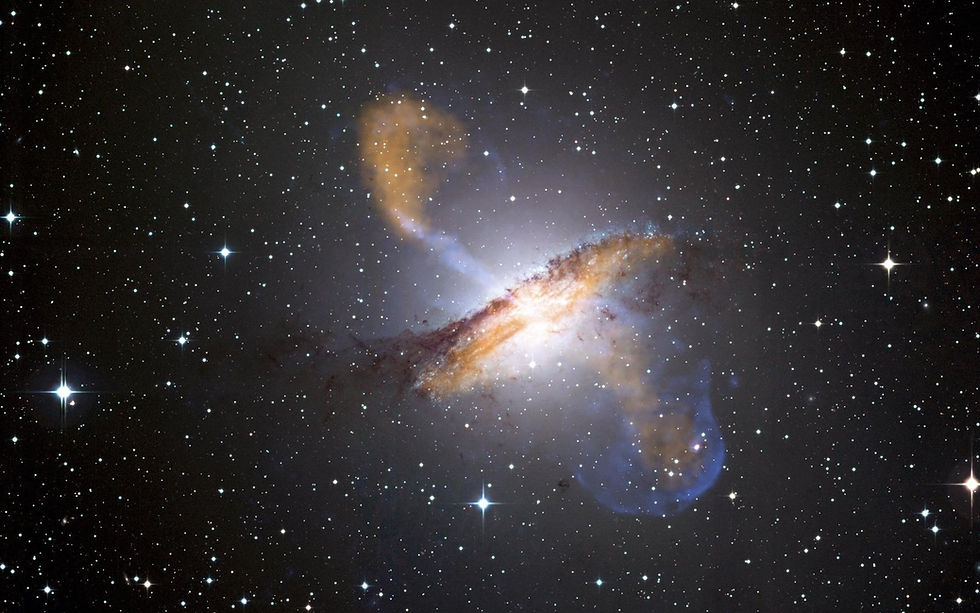Katherine Johnson - A Human Computer Who Reached The Stars
- ChangeForHer

- Jul 29, 2024
- 2 min read
Updated: Oct 8, 2024
By: Lucy Yang

When you think of NASA's early space missions, you might envision astronauts in bulky suits or massive rockets blasting off. However, behind the scenes, a brilliant mathematician named Katherine Johnson was performing critical calculations to determine the success or failure of these historic flights.
Born in 1918 in White Sulphur Springs, West Virginia, Katherine Johnson demonstrated exceptional mathematical abilities early on. Her intellectual prowess was so advanced that her hometown schools did not offer courses sufficiently challenging for her. Determined to nurture their daughter's potential, her parents moved the family so that Katherine could receive an appropriate education.
Remarkably, Katherine advanced through her academic studies at an extraordinary pace. She skipped several grades and commenced high school at the age of ten. By the time she was fifteen, she was already attending college, a period when most of her peers were still grappling with algebra.
In 1953, Katherine secured a position at the National Advisory Committee for Aeronautics (NACA), the organization that would later become NASA. Her role was that of a "computer," a term used at the time to describe individuals who performed complex mathematical calculations by hand. Katherine quickly distinguished herself as a human calculator of exceptional skill.
A pivotal moment in her career occurred in 1962, as astronaut John Glenn prepared to become the first American to orbit the Earth. Although NASA's new electronic computers calculated his flight path, Glenn hesitated to rely solely on these machines. He famously insisted, "Get the girl to check the numbers." The "girl" he referred to was 43-year-old Katherine Johnson. Glenn trusted her calculations more than any machine, and her precise computations contributed to the success of his mission.
Katherine's contributions continued after Glenn's flight. Her mathematical expertise was instrumental in the success of the Apollo 11 mission, which landed the first humans on the moon. Katherine's meticulous work also made the iconic moment of Neil Armstrong's "One Small Step for Man" possible.
Working at NASA during the 1950s and 60s, Katherine faced significant challenges as an African American woman. She encountered both racial and gender discrimination, initially being required to use separate bathrooms and excluded from eating lunch with her white colleagues. Despite these obstacles, Katherine's exceptional abilities and determination enabled her to excel.
An interesting anecdote about Katherine is her intense focus on her work, which often led her to forget to cash her paychecks. Her husband frequently had to remind her to attend to this detail.
Although it took far too long for her to receive the recognition she deserved, President Obama eventually honored Katherine Johnson with the Presidential Medal of Freedom in 2015. Katherine passed away in 2020 at 101, but her legacy endures. She demonstrated that one could reach for the stars with intelligence, determination, and perseverance.
References
1. NASA. "Katherine Johnson Biography." (https://www.nasa.gov/content/katherine-johnson-biography).
2. Biography.com. "Katherine Johnson." (https://www.biography.com/scientist/katherine-g-johnson).
3. Smithsonian National Air and Space Museum. "Katherine Johnson." (https://airandspace.si.edu/stories/editorial/katherine-johnson-1921%E2%80%932020).
4. NPR. "Katherine Johnson, NASA Mathematician And An Inspiration For 'Hidden Figures,' Dies." (https://www.npr.org/2020/02/24/614066745/katherine-johnson-nasa-mathematician-and-an-inspiration-for-hidden-figures-dies).
5. The White House. "Presidential Medal of Freedom Recipients." (https://obamawhitehouse.archives.gov/the-press-office/2015/11/24/president-obama-awards-2015-presidential-medal-freedom).
6. The New York Times. "Katherine Johnson Dies at 101." (https://www.nytimes.com/2020/02/24/science/katherine-johnson-dead.html).
7. Shetterly, Margot Lee. ‘Hidden Figures’. HarperCollins, 2016.




Comments